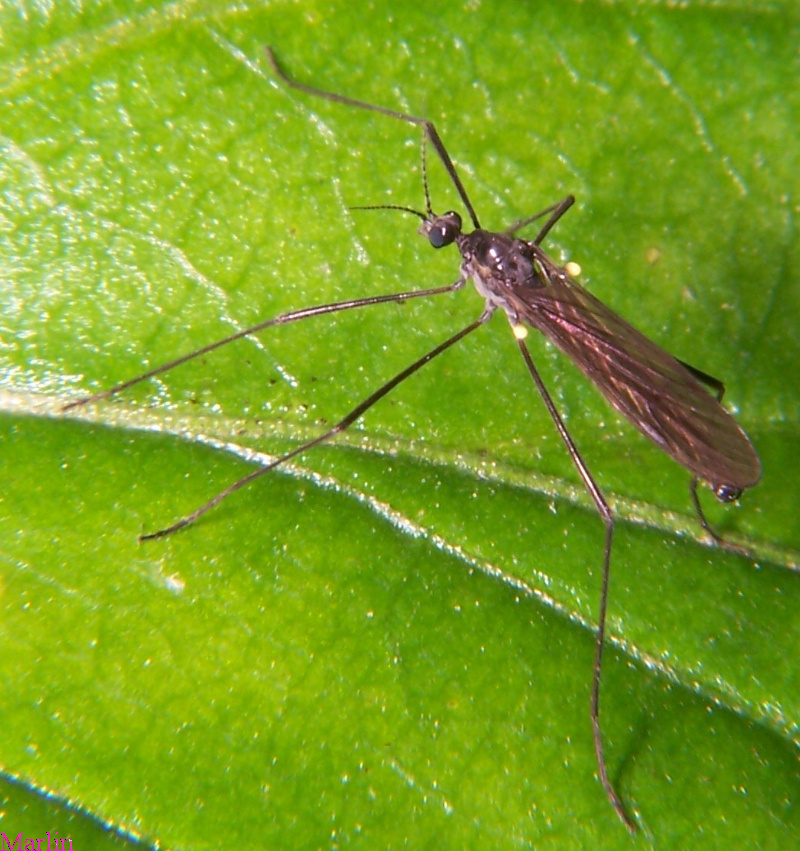Crane Fly – Gnophomyia tristissima
Crane flies form a highly diverse group of insects, both in number of species and in larval habitats, which extend from aquatic to terrestrial. The body plan or morphology of crane flies is rather simple. An elongate body, one pair of narrow wings, and long, slender legs characterize them. The body size ranges from 5 to 50 mm and can be described as mosquito-like. They are often mistaken for mosquitoes, but they belong to a group of harmless flies and can be distinguished from all other true flies by the transverse V-shaped groove on the dorsal part of the thorax.
In North America, more than 1,500 species of crane flies have been described and over 300 species are known from Pennsylvania. This number probably represents only about two-thirds of the estimated actual number for the state, and much more precise taxonomic studies are needed.

Adult crane flies are usually sluggish fliers and are often abundant in moist woodlands and around water, usually near places where their larval life is spent. They occur mainly in spring and fall, but species of wingless, snow crane flies (Chionea) appear in the winter. Adult crane flies are most active in the cooler part of the day, usually around dusk. Adult males are more abundant at the beginning of the flight period while females are more numerous toward the end.
Although individual adults have a relatively short life span of 10 to 15 days, the flight period for each species can last from 25-30 days.
Family Tipulidae – crane flies, tipules
Flies Main | Flies Index | Tachinidae | Syrphidae | Bee Flies | Blow Flies | Flesh Flies
Tipulidae is the largest family of Diptera with about 1,500 species in North America

